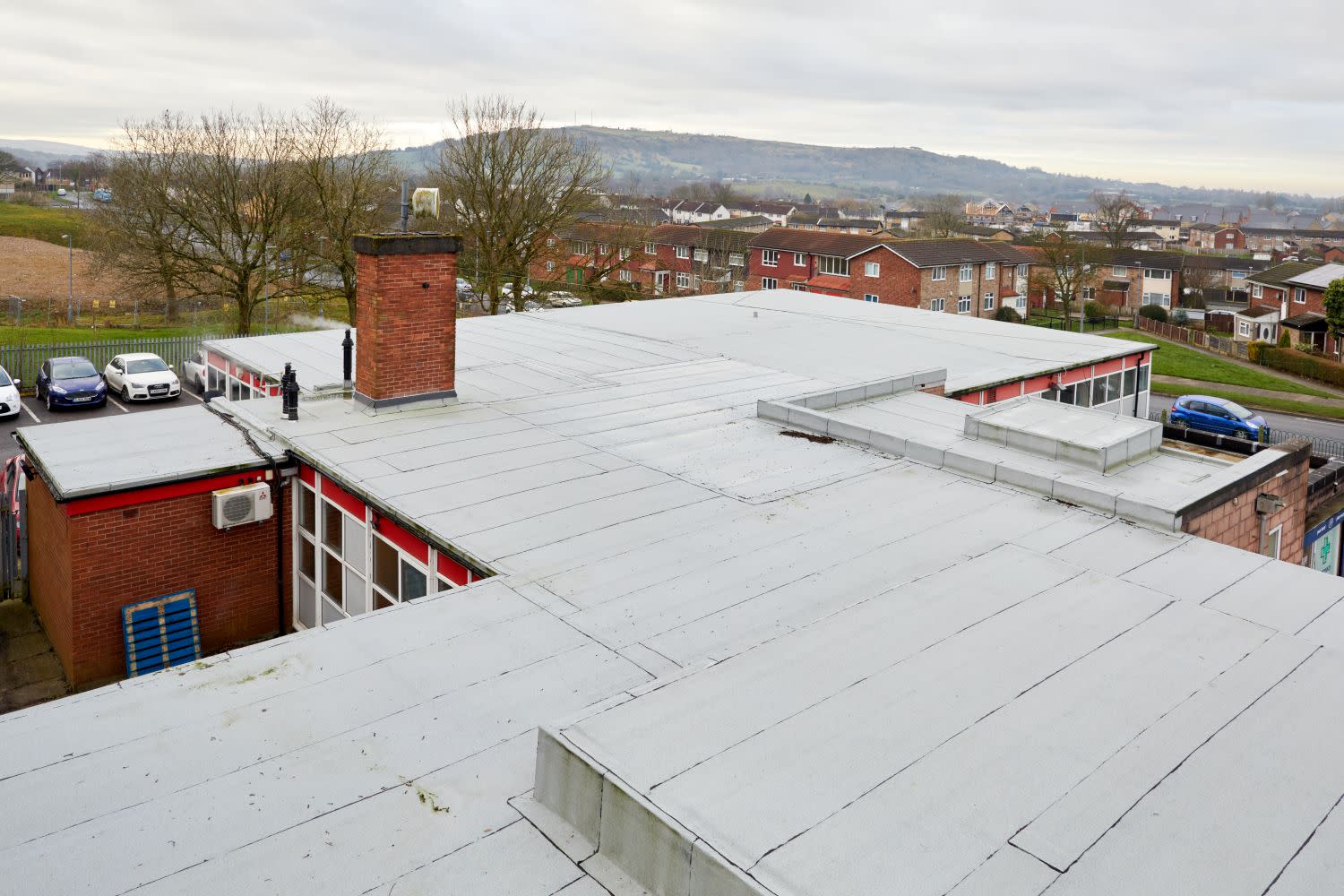

Articles
What Is A Bitumen Roof
Modified: February 25, 2024
Learn all about bitumen roofs in our informative articles. Find out what a bitumen roof is, how it is installed, and its benefits and drawbacks.
(Many of the links in this article redirect to a specific reviewed product. Your purchase of these products through affiliate links helps to generate commission for Storables.com, at no extra cost. Learn more)
Introduction
When it comes to protecting our homes or commercial buildings from the elements, the roof is one of the most important components. Therefore, it is essential to choose a roofing material that offers durability, longevity, and reliable performance. One such material that has gained popularity in recent years is bitumen roofing. In this article, we will explore what exactly a bitumen roof is and delve into its advantages, disadvantages, installation process, maintenance, and more.
Bitumen roof, also known as asphalt roofing, is a type of roofing material that is made from bitumen, a byproduct of the petroleum refining process. It is a highly versatile and durable material that has been used in the construction industry for decades. Bitumen roofs are known for their exceptional waterproofing properties, making them an ideal choice for regions that experience heavy rainfall or extreme weather conditions.
Bitumen roofs are composed of multiple layers. The base layer is typically made of fiberglass or polyester, which provides strength and stability to the roof. On top of the base layer, multiple layers of bitumen are applied, followed by a top layer of granules or minerals that provide UV protection and enhance the aesthetic appeal of the roof.
The popularity of bitumen roofing stems from its numerous advantages. Firstly, bitumen roofs are cost-effective compared to other roofing materials such as metal or tiles. Secondly, they offer excellent durability and can withstand extreme temperatures, making them suitable for both hot and cold climates. Additionally, bitumen roofs are easy to install, require minimal maintenance, and have a long lifespan.
Despite their many advantages, bitumen roofs do have some disadvantages. One of the drawbacks is that bitumen is a petroleum-based product, which can have environmental implications. Additionally, bitumen roofs can be susceptible to damage from punctures or heavy foot traffic, and they may require periodic maintenance to ensure their longevity.
In the next sections, we will delve deeper into the various aspects of bitumen roofs, including the different types of bitumen roofs available, the installation process, maintenance and repair, the longevity and durability of the roofs, and their cost. We will also compare bitumen roofing with other popular roofing materials and discuss its environmental impact. So, keep reading to learn more about bitumen roofs and whether they are the right choice for your next roofing project.
Key Takeaways:
- Bitumen roofing offers cost-effective, durable, and waterproof solutions for homeowners and building owners, with options to suit various architectural styles and slope requirements.
- While bitumen roofing provides excellent waterproofing and durability, environmental implications, maintenance requirements, and comparisons with other roofing materials should be carefully considered before making a decision.
Read more: How To Install Modified Bitumen Roofing
Definition of Bitumen Roof
Before we dive into the details, let’s start by understanding what exactly a bitumen roof is. Bitumen roofing, also known as asphalt roofing, is a type of roofing material that is made from bituminous compounds. Bitumen is a sticky and gooey substance that is produced during the distillation of crude oil. It is then mixed with fillers, such as sand or fiberglass, to create a durable and waterproof roofing material.
Bitumen roofs are commonly used in both residential and commercial buildings due to their exceptional waterproofing properties. The main advantage of bitumen roofing is its ability to seal out water effectively, which makes it a reliable choice for regions that experience heavy rainfall or extreme weather conditions.
Bitumen roofs are typically composed of multiple layers. The base layer is made of either fiberglass or polyester, which provides strength and stability to the roof. On top of the base layer, several layers of bituminous compounds are applied. These layers are usually reinforced with various materials like fiberglass, polyester, or a combination of both, to enhance the roof’s durability and resistance to tears and cracks.
Another important component of bitumen roofs is the top layer. This layer is often covered with granules or mineral surfacing, which serve multiple purposes. Firstly, they protect the roof from ultraviolet (UV) radiation, which can deteriorate the bitumen over time. Secondly, these granules give the roof its color and aesthetic appeal, allowing homeowners or building owners to choose a style that complements the overall design of the structure.
Bitumen roofs come in different forms, including shingles and rolls. Bitumen shingles are individual units that are laid in overlapping rows, similar to traditional asphalt shingles. These shingles can be either nailed or glued to the roof deck, providing a protective layer that keeps out water and other elements. Bitumen rolls, on the other hand, are continuous sheets of bitumen that are rolled out onto the roof and secured in place. This method is commonly used on flat roofs or low-sloping roofs.
In summary, a bitumen roof is a type of roofing material made from bituminous compounds. It is known for its exceptional waterproofing properties and is composed of multiple layers, including a base layer, bituminous layers, and a top layer with granules or mineral surfacing. Bitumen roofs are available in shingle or roll form, providing durability and protection for residential and commercial buildings.
Advantages of Bitumen Roofing
Bitumen roofing offers several advantages that make it a popular choice for both residential and commercial buildings. Let’s explore the key benefits of choosing a bitumen roof:
- Excellent Waterproofing: One of the biggest advantages of bitumen roofing is its exceptional waterproofing capabilities. Bitumen is a highly water-resistant material that forms a tight seal, effectively preventing water leaks and protecting the structure underneath from moisture damage.
- Durability and Longevity: Bitumen roofs are known for their durability and long lifespan. They can withstand harsh weather conditions, including heavy rain, strong winds, and even hailstorms. With proper installation and maintenance, a bitumen roof can last for 20 to 30 years or even longer.
- Cost-Effective Option: Bitumen roofing is a cost-effective choice compared to other roofing materials such as metal or tiles. The materials used in bitumen roofs are relatively inexpensive, making them a more affordable option for homeowners and building owners.
- Easy Installation: Bitumen roofs are relatively easy to install, which can help decrease the labor costs associated with roof installation. The flexibility of bitumen allows it to conform to the shape of the roof, making the installation process quicker and more efficient.
- Variety of Styles and Colors: Bitumen roofing comes in a wide range of styles, colors, and textures, allowing homeowners and building owners to choose a design that matches their aesthetic preferences. Whether you prefer traditional shingles or a sleek modern look, there is a bitumen roofing option to suit your style.
- Low Maintenance: Bitumen roofs require minimal maintenance over their lifespan. Regular inspections and simple cleaning routines are usually enough to keep the roof in good condition. Additionally, any necessary repairs can be easily addressed with patching or sealing materials.
- Safety and Fire Resistance: Bitumen roofs have good fire resistance properties, making them a safer option compared to certain other roofing materials. They are less likely to catch fire and can help limit the spread of flames in the event of a fire.
These advantages make bitumen roofing a practical and reliable choice for many homeowners and building owners. Whether you are looking for a cost-effective roofing solution, excellent waterproofing, or a long-lasting roof, bitumen roofing has you covered.
Disadvantages of Bitumen Roofing
While bitumen roofing offers numerous advantages, it is important to consider the potential disadvantages before making a decision. Let’s explore some of the drawbacks of bitumen roofing:
- Petroleum-Based Material: Bitumen is a petroleum-based product, which means it is derived from non-renewable resources. This can have environmental implications, as the extraction and processing of petroleum can contribute to greenhouse gas emissions and other environmental impacts.
- Susceptible to Damage: Bitumen roofs can be susceptible to damage from punctures or heavy foot traffic. Sharp objects or falling debris can cause tears or holes in the roofing material, which may result in water leaks and require repairs.
- Requires Periodic Maintenance: While bitumen roofs are generally low maintenance, they do require periodic inspections and maintenance to ensure their longevity. This may involve checking for any signs of damage, cleaning debris off the roof, and reapplying protective coatings or sealants as needed.
- Not Ideal for Extreme Temperature Changes: Bitumen roofing can expand and contract with temperature changes. In regions with extreme temperature fluctuations, this expansion and contraction can lead to stress on the roof and potentially cause cracks or other damage over time.
- Limited Design Flexibility: While bitumen roofing comes in a variety of styles and colors, the design flexibility may be more limited compared to other roofing materials such as clay tiles or metal. If you have specific design requirements or preferences, it is important to consider whether bitumen roofing can meet those needs.
- Heat Absorption: Bitumen roofs can absorb and retain heat, especially in hot climates. This can result in higher cooling costs during the summer months as the heat is transferred into the building. However, the use of reflective or light-colored coatings can help mitigate this issue.
- Not Suitable for Steep Slopes: Bitumen roofing is not recommended for roofs with steep slopes. The material may not adhere properly to the surface and could potentially lead to water leaks or inadequate coverage.
It is important to evaluate these disadvantages alongside the advantages of bitumen roofing to determine whether it is the right choice for your specific needs. Considering factors such as climate, budget, maintenance requirements, and design preferences will help you make an informed decision about whether bitumen roofing is the best option for your home or building.
Types of Bitumen Roofs
Bitumen roofs come in various types, offering options to suit different architectural styles and functional requirements. Let’s explore some of the common types of bitumen roofs:
- Bitumen Shingles: Bitumen shingles are individual units that are installed in overlapping rows. These shingles are available in various shapes, sizes, and textures, allowing homeowners to achieve a desired aesthetic. Bitumen shingles are often designed to resemble traditional roofing materials like wood shakes or slate, offering a cost-effective alternative with improved durability and resistance to the elements.
- Bitumen Rolls: Also known as modified bitumen roofing, bitumen rolls are continuous sheets of bitumen that are rolled out onto the roof surface. They are commonly used in flat or low-sloping roofs and provide a seamless, waterproof membrane. Bitumen rolls can be self-adhered, meaning they have a sticky backing that adheres directly to the roof deck, or they can be heat-applied using a torch. This type of roofing offers excellent durability and easy installation.
- Built-Up Roofing: Built-up roofing (BUR) systems have been used for decades and consist of multiple layers of bitumen and reinforcing materials, such as fiberglass or polyester. These layers are alternated with layers of insulation to create a strong and durable roof membrane. BUR roofs are known for their longevity and resistance to weathering. The installation process involves applying hot bitumen or adhesive to adhere the layers together.
- Modified Bitumen Roofing: Modified bitumen roofing is a variation of traditional built-up roofing. It combines bitumen with synthetic rubber or plastic modifiers to improve the roof’s flexibility, durability, and resistance to temperature fluctuations. Modified bitumen membranes can be installed as rolls or sheets and are available in different thicknesses and surface treatments, including smooth, granulated, or reflective surfaces.
- Hybrid Systems: Hybrid bitumen roofing systems incorporate multiple types of bitumen roofing materials to achieve specific performance characteristics. For example, a hybrid system may combine the durability of built-up roofing with the flexibility and ease of installation of modified bitumen roofing. Hybrid systems allow for customization and can be tailored to meet the specific requirements of a roofing project.
Each type of bitumen roof offers unique advantages and may be better suited for specific architectural styles, slope requirements, or budget considerations. It is important to consult with a roofing professional to determine the most appropriate type of bitumen roof for your specific needs.
Read more: What Is A Roof
Installation Process
The installation process of a bitumen roof involves several steps to ensure a proper and durable roof system. It is generally recommended to hire a professional roofing contractor with experience in bitumen roof installation for the best results. Let’s outline the typical installation process:
- Roof Inspection: Before the installation process begins, a thorough inspection of the existing roof structure is conducted. This helps identify any underlying issues, such as leaks or damage, that need to be addressed before installing the new bitumen roof.
- Prepare the Roof Deck: The roof deck, typically made of plywood or oriented strand board (OSB), needs to be prepared for the installation of the bitumen roof. This may involve repairing or replacing damaged sections of the roof deck and ensuring it is clean, free of debris, and properly secured.
- Install Underlayment: A layer of underlayment is applied over the roof deck to provide an additional waterproof barrier and to protect the roof from moisture. This underlayment is typically a self-adhering membrane or a modified bitumen sheet that is rolled out and secured to the roof deck.
- Apply Bitumen Layers: Multiple layers of bitumen material are then applied over the underlayment. This can be done through the use of hot bitumen, which is heated and then applied to the roof deck, or through the use of pre-fabricated bitumen rolls. The layers are alternated with layers of reinforcing materials, such as fiberglass or polyester, to enhance the roof’s strength and durability.
- Seal and Secure: Once the bitumen layers are applied, the seams, edges, and penetrations are carefully sealed to ensure a watertight surface. Proper sealing is crucial to prevent water leakage and potential damage to the structure. Roofing nails or mechanical fasteners may also be used to secure the bitumen material in place.
- Install Surface Material: The final step in the installation process is to install the surface material on top of the bitumen layers. This can be in the form of bitumen shingles, which are installed in overlapping rows and secured with roofing nails, or it can be a granulated or mineral surface treatment that is adhered to the top layer of the bitumen.
It is important to note that the installation process may vary depending on the specific type of bitumen roof being installed and the manufacturer’s recommendations. Additionally, safety precautions should be followed throughout the installation process, including the use of proper protective gear and adherence to local building codes and regulations.
Overall, a professionally installed bitumen roof can provide reliable protection and durability for many years. Regular inspections and maintenance, along with prompt repairs of any signs of damage or deterioration, will help extend the lifespan of the bitumen roof and ensure its performance over time.
When installing a bitumen roof, make sure to use proper ventilation to prevent moisture buildup, choose high-quality materials, and follow manufacturer’s guidelines for installation.
Maintenance and Repair of Bitumen Roof
Proper maintenance and regular inspections are essential for ensuring the longevity and performance of a bitumen roof. With the right care, a bitumen roof can last for many years. Here are some key maintenance and repair considerations for bitumen roofs:
- Regular Inspections: It is important to inspect the bitumen roof periodically to identify any signs of damage or issues that need to be addressed. Inspect the roof for cracks, blistering, loose or missing shingles, damaged flashing, and any other visible signs of wear and tear.
- Cleaning Debris: Regularly remove debris, such as leaves, branches, and dirt, from the roof surface. Accumulated debris can trap moisture and promote the growth of algae or moss, which can lead to water damage and deterioration of the roofing material.
- Fixing Leaks: If you notice any signs of water leakage, such as stains on ceilings or walls, address the issue promptly. Identify the source of the leak and repair it immediately to prevent further damage to the roof and the interior of the building. In some cases, professional help may be required to properly locate and repair the leak.
- Sealing and Patching: Over time, the bitumen roof may develop cracks or punctures. These should be repaired promptly to prevent water intrusion. Clean the area around the damaged spot, apply a bitumen-based sealant or patching material, and ensure it is properly adhered to the roof surface for a watertight seal.
- Maintaining Flashing: Flashing is the metal or bitumen strip that is installed around roof penetrations, such as vents, chimneys, and skylights, to provide a watertight seal. Regularly inspect the flashing for any signs of damage or deterioration. Replace or repair damaged flashing to maintain the integrity of the roof system.
- Inspecting Gutters and Drains: Keep gutters and drains clear of debris to ensure proper water drainage from the roof. Clogged gutters can cause water to back up and potentially lead to water damage. Regularly clean and inspect gutters and downspouts to prevent clogging and ensure proper water flow away from the roof.
- Consider Professional Maintenance: Periodic professional roof inspections and maintenance can help identify and address potential issues in a timely manner. A professional roofer can perform a more thorough inspection, check for underlying problems, and provide expert recommendations for maintenance and repairs.
By following these maintenance practices, you can extend the lifespan of your bitumen roof and minimize the risk of water damage and other roofing issues. It is important to remember that regular maintenance should be accompanied by any necessary repairs to ensure the roof remains in optimal condition.
Additionally, it is recommended to consult with a roofing professional for guidance on the specific maintenance needs of your bitumen roof, as well as to ensure compliance with any warranty requirements.
Longevity and Durability
Bitumen roofs are known for their longevity and durability, making them a reliable choice for homeowners and building owners. With proper installation and regular maintenance, a bitumen roof can provide excellent performance and protect your property for many years. Let’s explore the factors that contribute to the longevity and durability of bitumen roofs:
Quality Materials: The durability of a bitumen roof depends on the quality of the materials used. High-quality bitumen, combined with reinforcement layers made of materials like fiberglass or polyester, enhances the roof’s strength and resistance to tears and cracks. It is important to use materials from reputable manufacturers to ensure the longevity of the roof.
Installation Techniques: Proper installation by experienced professionals plays a vital role in the longevity and durability of bitumen roofs. Improper installation can lead to issues such as leaks, poor adhesion, and premature deterioration. Hiring a qualified roofing contractor familiar with bitumen roof installation is crucial to ensure the roof is properly installed and following industry best practices.
Maintenance and Inspections: Regular maintenance and inspections are key to prolonging the lifespan of a bitumen roof. Routine inspections can identify any potential issues or damage that needs to be addressed promptly. Regular cleaning of debris and proper maintenance of flashing and other roof components will help prevent water infiltration and other damage.
Climate and Weather Conditions: Bitumen roofs are designed to withstand a wide range of weather conditions. They can handle heavy rain, extreme temperatures, and even hail. However, exposure to extreme weather conditions over an extended period can impact the roof’s performance. Regular inspections will help identify any damage caused by severe weather, allowing for timely repairs.
Proper Ventilation: Proper ventilation is essential for the longevity of any roof, including bitumen roofs. Adequate airflow helps prevent moisture buildup and heat retention, which can accelerate the aging and deterioration of the roofing material. Ensure that your attic or roof space is properly ventilated to maintain the optimal conditions for your bitumen roof.
Regular Maintenance: Regular maintenance, as discussed earlier, is crucial for the longevity and durability of bitumen roofs. This includes routine inspections, cleaning of debris, addressing any leaks or damage promptly, and proper maintenance of roof components. Following a proactive maintenance schedule will help identify and prevent minor issues from turning into major problems.
When appropriately installed and maintained, a bitumen roof can last for 20 to 30 years or even longer. However, factors such as the quality of materials, installation techniques, climate, and maintenance practices can affect the actual lifespan of the roof. It is important to follow the manufacturer’s recommendations and seek professional guidance to maximize the longevity and durability of your bitumen roof.
Regular inspections and maintenance, combined with prompt repairs when necessary, will help ensure that your bitumen roof continues to provide reliable protection for your home or building for many years to come.
Cost of Bitumen Roofing
When it comes to roofing materials, cost is an important factor to consider. Bitumen roofing offers a cost-effective option for homeowners and building owners who are looking for a durable and reliable roofing solution. Let’s dive into the factors that contribute to the cost of bitumen roofing:
Material Costs: Bitumen roofing materials are generally less expensive compared to other roofing materials such as metal or tiles. The cost of bitumen roofing materials, including bitumen rolls, shingles, underlayment, and flashing, will vary depending on the quality and brand chosen. It is important to consider the longevity and performance of the materials when evaluating their cost.
Installation Costs: The cost of installing a bitumen roof will depend on several factors, including the size and complexity of the roof, the type of bitumen roofing being installed, and the location of the building. The installation process may require labor, equipment, and additional materials for flashing, fasteners, and sealants. Obtaining multiple quotes from reputable roofing contractors will help determine the overall installation cost.
Roof Size and Complexity: The size and complexity of the roof will affect the cost of bitumen roofing. A larger roof will require more materials and labor, increasing the overall cost. Steep-sloped roofs or roofs with multiple angles and valleys may require additional time and effort for installation, which can impact the cost as well.
Roof Accessories and Upgrades: Additional roof accessories, such as roof vents, skylights, or chimneys, can add to the overall cost of bitumen roofing. The price of these accessories will vary depending on the specific products chosen and any necessary modifications or installations required.
Location and Labor Costs: Labor costs for bitumen roof installation can vary based on the location and prevailing wage rates. Factors such as accessibility, local building codes and requirements, and regional labor costs can influence the overall cost of the roofing project.
Long-Term Value: While the initial cost of bitumen roofing may be lower compared to other materials, it is important to consider the long-term value it provides. Bitumen roofs have a good lifespan and require minimal maintenance, which can result in cost savings over time. Additionally, the durability and weather resistance of bitumen roofs can help prevent costly repairs or replacements in the future.
It is important to obtain detailed estimates from reputable roofing contractors and consider the overall value, including longevity, performance, and maintenance requirements, when assessing the cost of bitumen roofing. By doing so, you can make an informed decision and find the right balance between cost-effectiveness and the quality of the roofing system.
Read more: What Are The Eaves Of A Roof?
Comparison with Other Roofing Materials
When choosing a roofing material, it is essential to consider the options available and compare their features, advantages, and disadvantages. Let’s compare bitumen roofing with other popular roofing materials:
Metal Roofing: Metal roofing is known for its durability, longevity, and resistance to fire and extreme weather conditions. While metal roofing can be more expensive than bitumen roofing, it offers a sleek and modern appearance, requires minimal maintenance, and has a long lifespan. Bitumen roofing, on the other hand, provides a more cost-effective solution, is easier to install, and offers excellent waterproofing capabilities.
Clay or Concrete Tiles: Clay or concrete tiles are known for their aesthetic appeal and durability. They provide a traditional and elegant look to a building. However, they can be heavier and more expensive compared to bitumen roofing. Additionally, clay or concrete tiles may require additional structural support due to their weight. Bitumen roofing, on the other hand, is lightweight and can be installed on a variety of roof structures.
Asphalt Shingles: Asphalt shingles are one of the most common roofing materials due to their affordability and ease of installation. They offer a wide range of colors and styles to suit different architectural designs. However, asphalt shingles may not be as durable as bitumen roofing and have a shorter lifespan in comparison. Bitumen roofing provides better waterproofing capabilities and is more resistant to extreme weather conditions.
Slate Roofing: Slate roofing is a high-end option known for its beauty, longevity, and fire resistance. It offers a natural and sophisticated look to a building. However, slate roofing can be expensive to install and requires skilled professionals for proper installation. Bitumen roofing provides a more affordable alternative with similar durability and resistance to water.
Wood Shake or Shingles: Wood shake or shingle roofing offers a unique and natural appearance. It can provide excellent insulation properties and can be more environmentally friendly when sourced responsibly. However, wood roofing requires frequent maintenance, is susceptible to rot, weathering, and insect damage, and may not be permitted in some fire-prone areas. Bitumen roofing is more cost-effective, easier to maintain, and offers better resistance to the elements.
It is important to consider factors such as cost, durability, maintenance requirements, aesthetics, and local building codes when comparing roofing materials. Each material has its own set of advantages and disadvantages. The choice ultimately depends on your specific needs, budget, and the architectural design of your property.
Consulting with a roofing professional and conducting thorough research on different roofing materials will help you make an informed decision and select the roofing material that best suits your requirements.
Environmental Impact
When evaluating roofing materials, it is important to consider their environmental impact. Let’s discuss the environmental aspects of bitumen roofing:
Energy Consumption: The production of bitumen roofing materials requires a significant amount of energy, as it is derived from petroleum, a non-renewable resource. The extraction, refining, and transportation processes involved in obtaining bitumen contribute to greenhouse gas emissions and environmental pollution.
Carbon Footprint: The carbon footprint of bitumen roofing is relatively high due to the greenhouse gas emissions associated with its production. This carbon footprint can be mitigated by choosing roofing materials that incorporate recycled content or have lower embodied energy.
Waste Generation: During the installation process and throughout the lifespan of a bitumen roof, waste is generated. This waste primarily consists of old or damaged roofing materials, such as bitumen shingles or rolls, which need to be properly disposed of or recycled. Proper waste management practices can help reduce the environmental impact of bitumen roofing.
Recyclability: Bitumen roofing materials can be recycled, with the bitumen being used as an ingredient in new roofing products or as a component in asphalt pavement. Recycling reduces the amount of waste sent to landfills and conserves natural resources, offering an environmentally friendly approach to disposal.
Reflectivity and Heat Island Effect: Bitumen roofing has low reflectivity, meaning it absorbs more heat from the sun. This can contribute to the heat island effect in urban areas, where heat is trapped and results in higher energy consumption for cooling. However, reflective coatings can be applied to bitumen roofs to increase their reflectivity and reduce heat absorption.
Life Cycle Assessment: Conducting a life cycle assessment (LCA) allows for a comprehensive evaluation of the environmental impact of bitumen roofing. This assessment considers factors such as raw material extraction, manufacturing processes, installation, maintenance, and end-of-life disposal. It is important to consider LCAs and choose roofing materials that have lower environmental impacts throughout their life cycles.
Sustainable Alternatives: For those concerned about the environmental impact of bitumen roofing, sustainable alternatives are available. These include green roofs, which involve covering the roof with vegetation, or using materials such as recycled metal, clay, or concrete tiles, which have lower environmental impacts and longer lifespans.
Despite the environmental considerations associated with bitumen roofing, it is worth noting that bitumen roofs can provide long-lasting protection for buildings, which reduces the need for frequent replacements. Additionally, proper maintenance and disposal practices can further minimize the environmental impact of bitumen roofing.
Overall, it is important to strike a balance between the desired performance, cost, and environmental impact when selecting a roofing material. Consulting with roofing professionals and considering sustainable alternatives can help you make an informed decision that aligns with your environmental goals.
Conclusion
Bitumen roofing offers a reliable and cost-effective solution for homeowners and building owners who are looking for durable and waterproof roofing materials. Throughout this article, we have discussed the definition of bitumen roofing, its advantages, disadvantages, installation process, maintenance, longevity, cost, comparison with other roofing materials, and its environmental impact.
Bitumen roofs are known for their excellent waterproofing capabilities, durability, and cost-effectiveness. They can withstand extreme weather conditions and offer a long lifespan when properly maintained. Bitumen roofing materials come in various forms, including shingles and rolls, providing options to suit different architectural styles and slope requirements.
While bitumen roofing has its advantages, there are some considerations to keep in mind. Being a petroleum-based product, there are environmental implications associated with bitumen production and disposal. Additionally, proper installation, regular maintenance, and prompt repair of any damage are necessary to ensure the longevity and performance of a bitumen roof.
Comparing bitumen roofing with other materials, such as metal, clay or concrete tiles, asphalt shingles, and wood shakes or shingles, allows individuals to make an informed decision based on factors like cost, durability, maintenance requirements, and desired aesthetic appeal.
The environmental impact of bitumen roofing should be considered as well. While bitumen production and waste generation contribute to greenhouse gas emissions, bitumen roofing materials can be recycled, and reflective coatings can reduce heat absorption.
In conclusion, bitumen roofing provides a practical and cost-effective solution for homeowners and building owners who prioritize durability and waterproofing. However, environmental considerations should be taken into account, and sustainable alternatives may be worth exploring for those seeking greener roofing options.
Ultimately, consulting with roofing professionals and considering your specific needs, budget, and environmental goals will help guide you in making the best decision for your roofing project.
Frequently Asked Questions about What Is A Bitumen Roof
Was this page helpful?
At Storables.com, we guarantee accurate and reliable information. Our content, validated by Expert Board Contributors, is crafted following stringent Editorial Policies. We're committed to providing you with well-researched, expert-backed insights for all your informational needs.
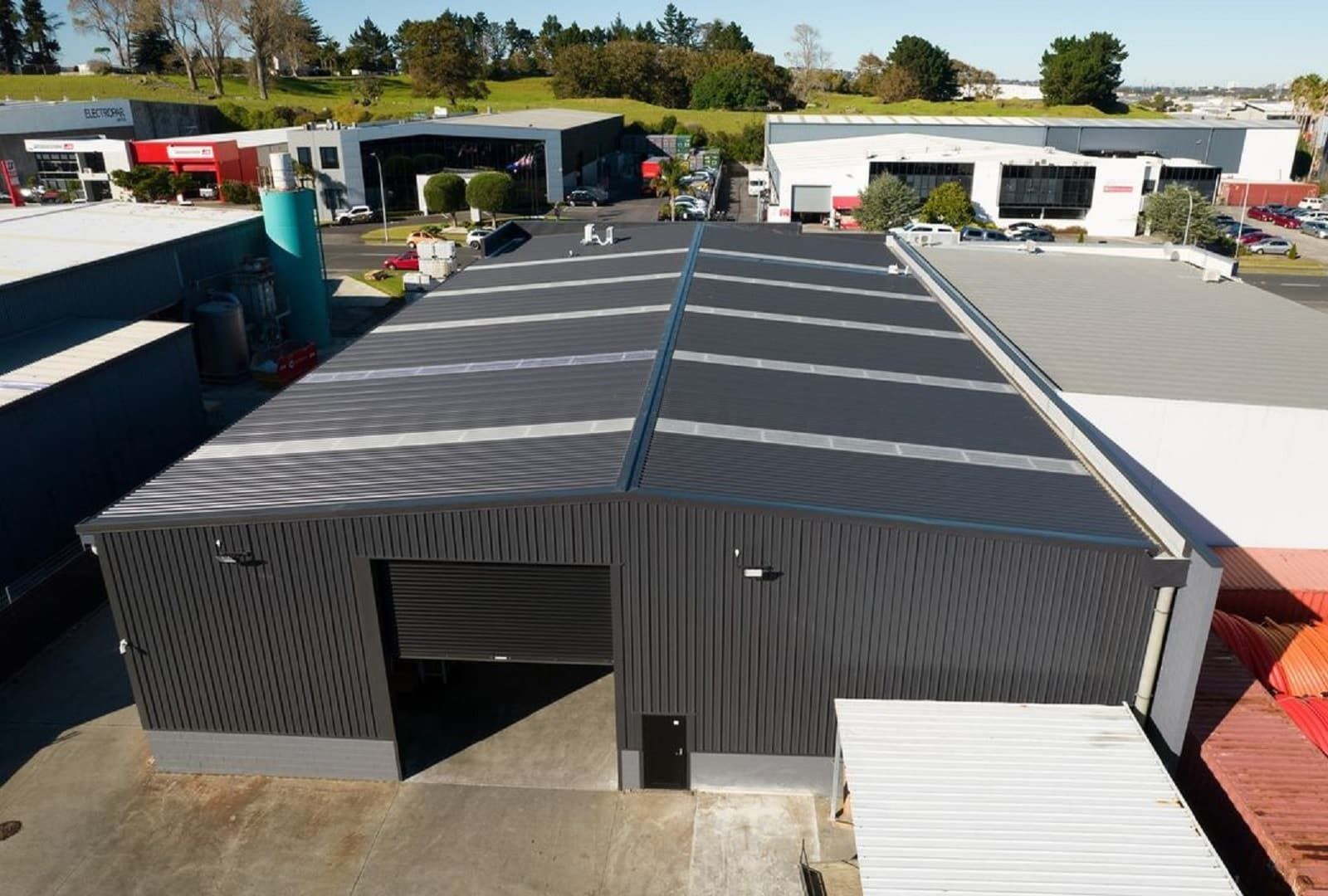
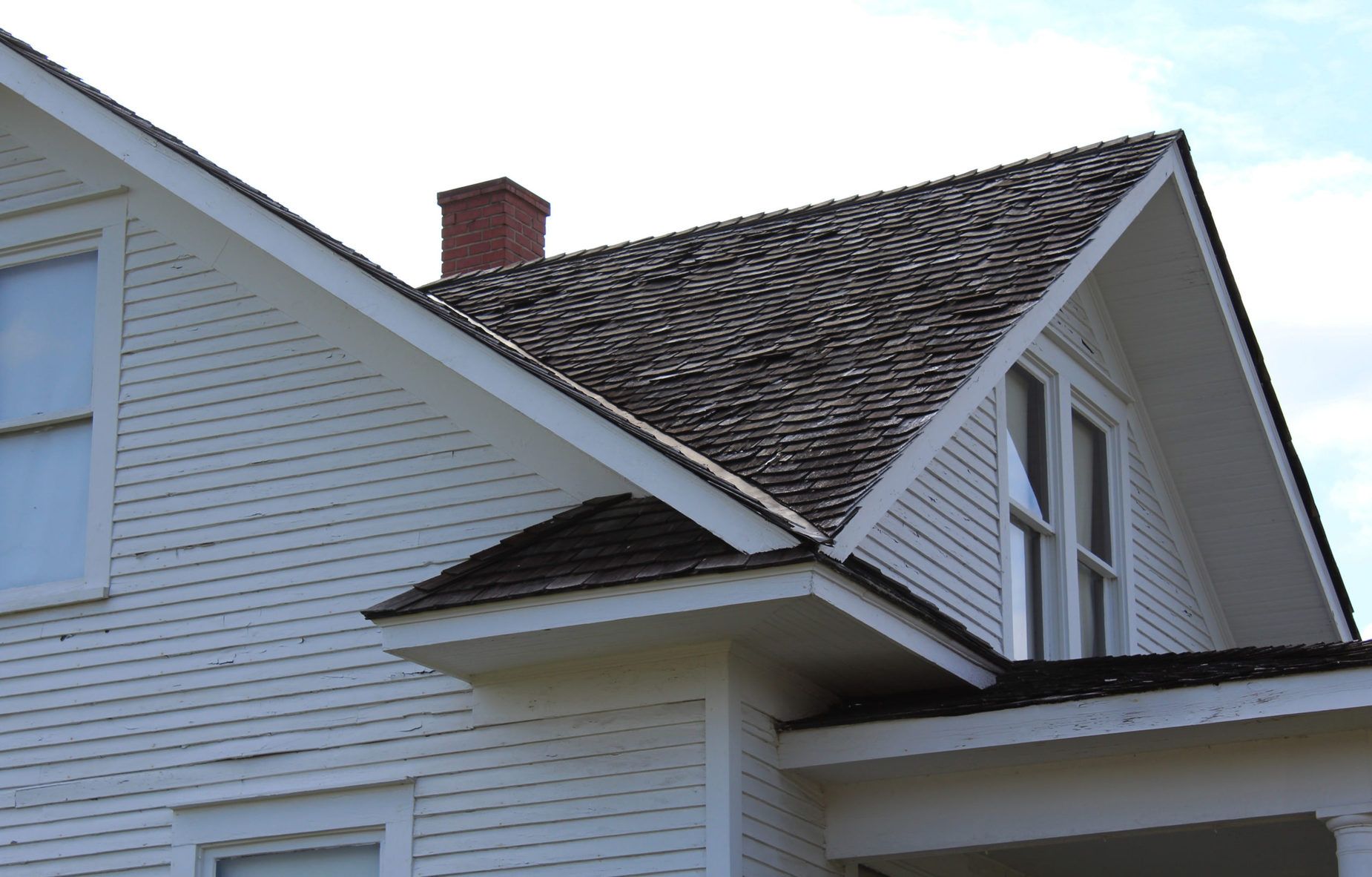
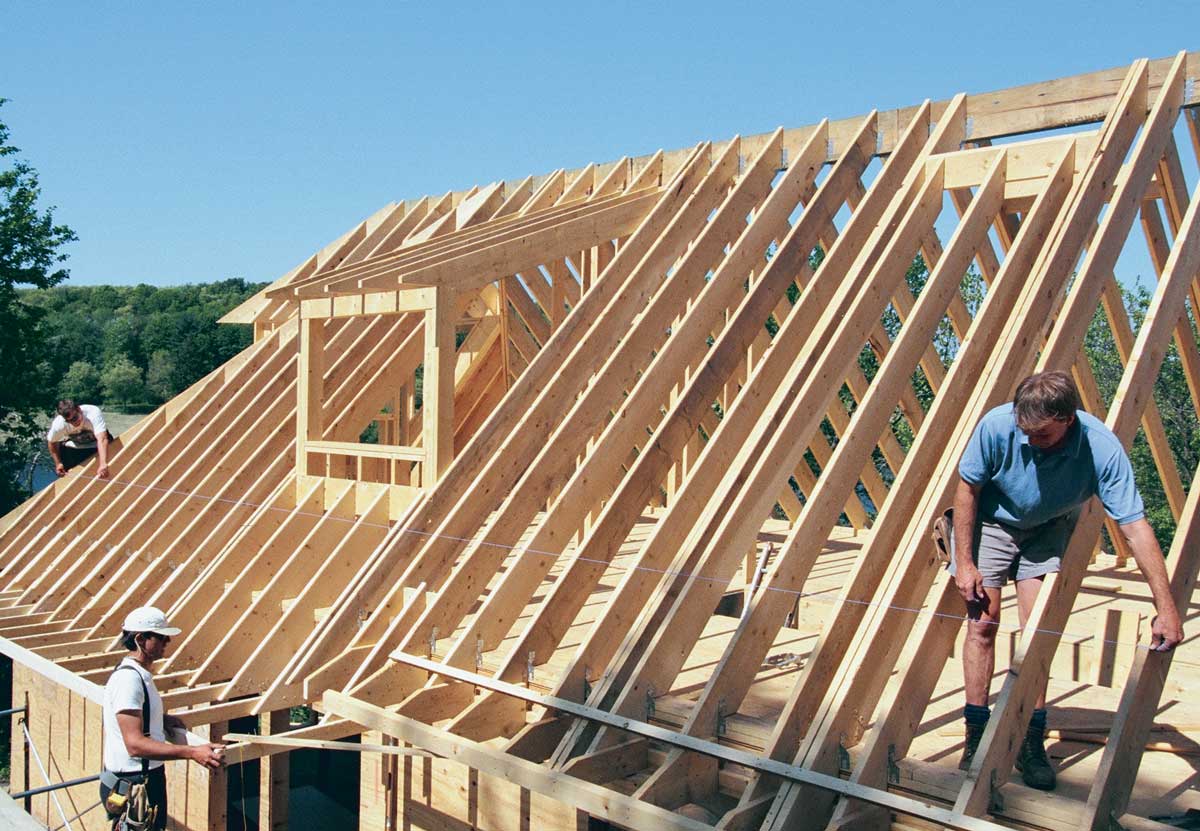
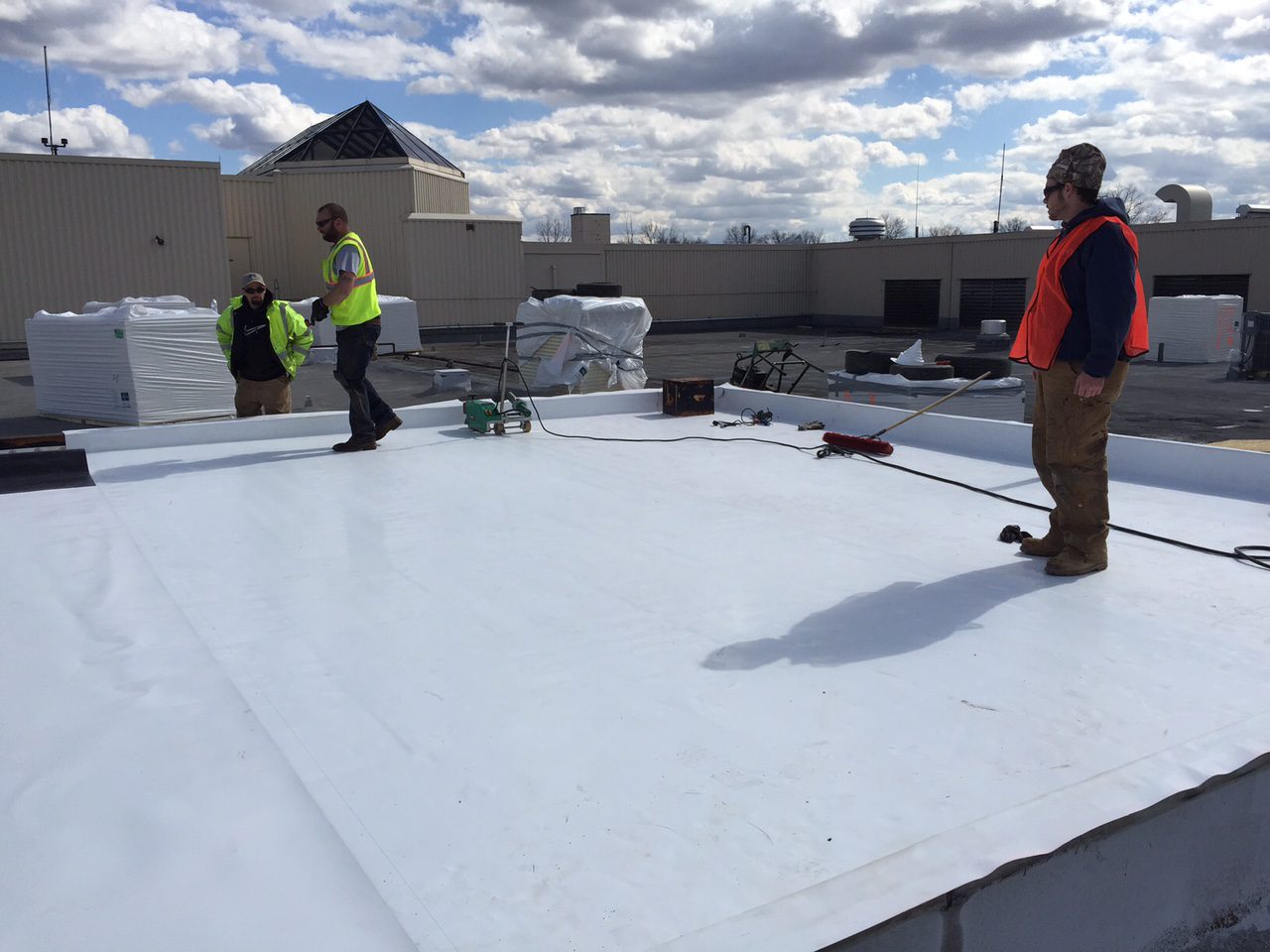
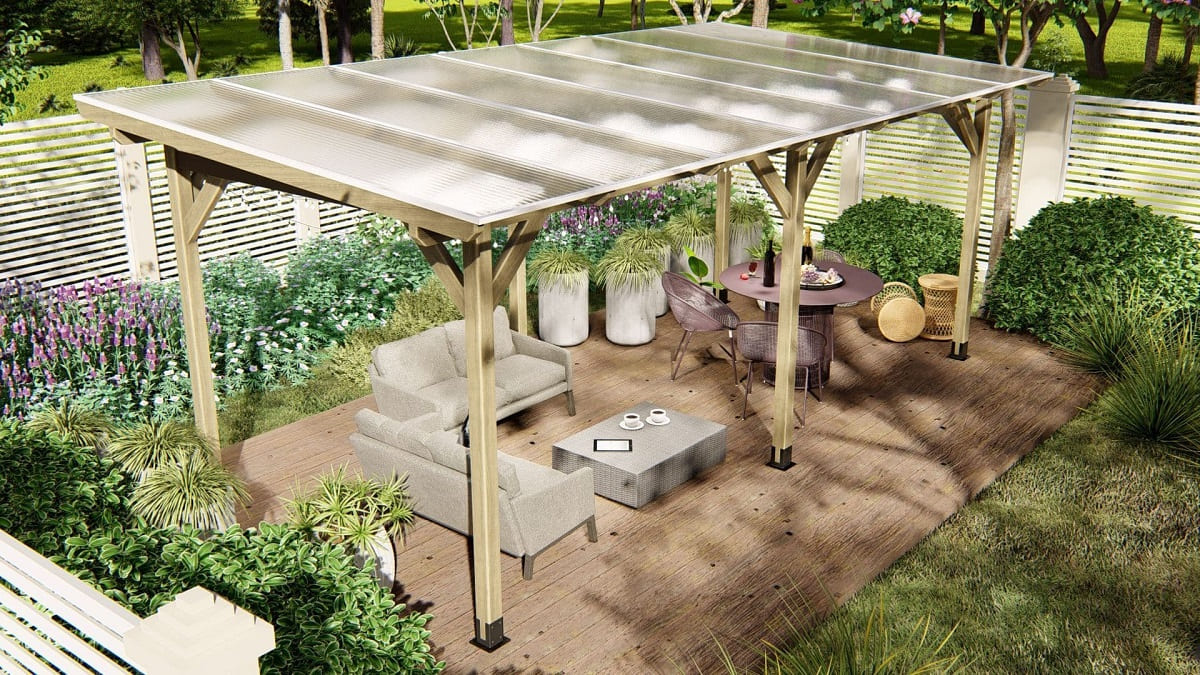
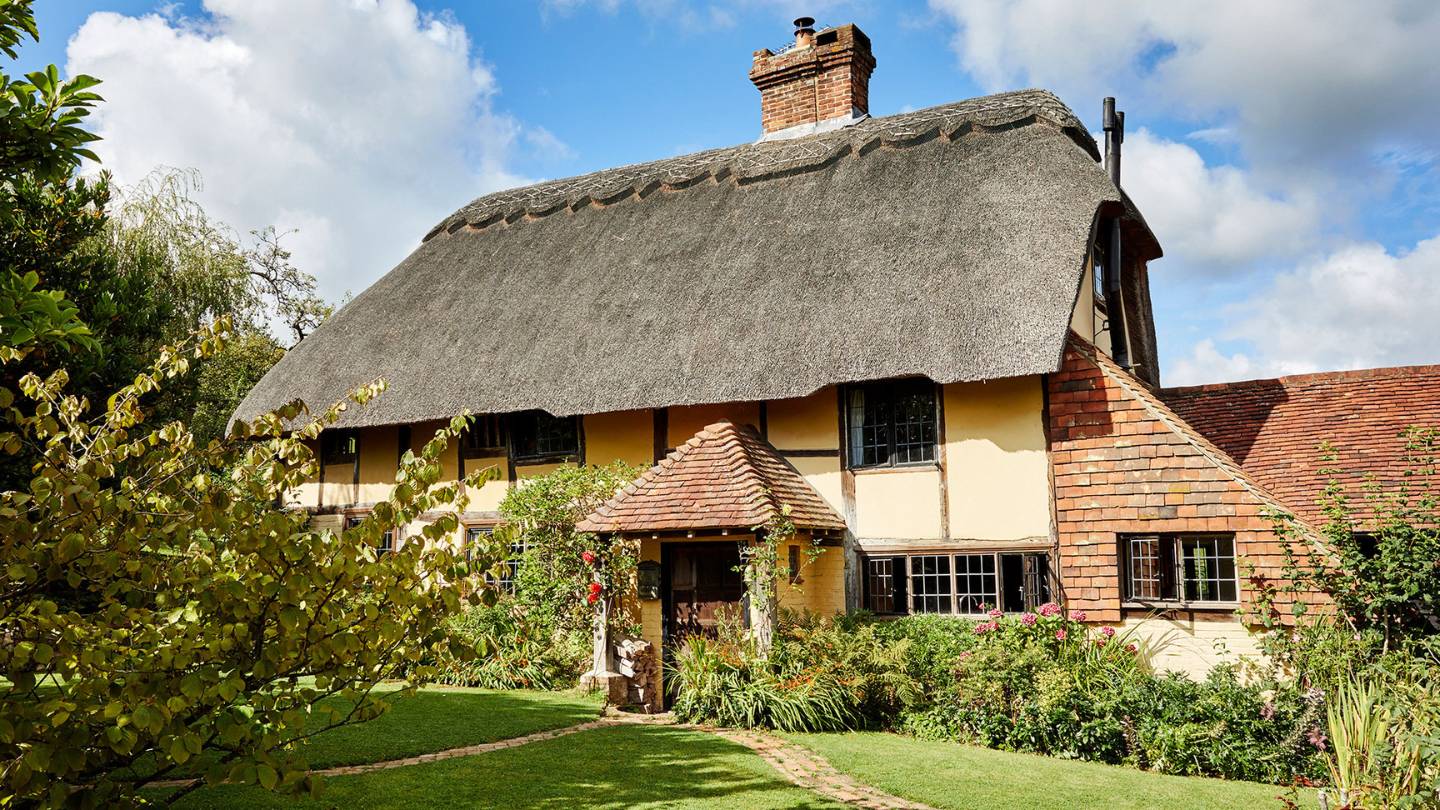
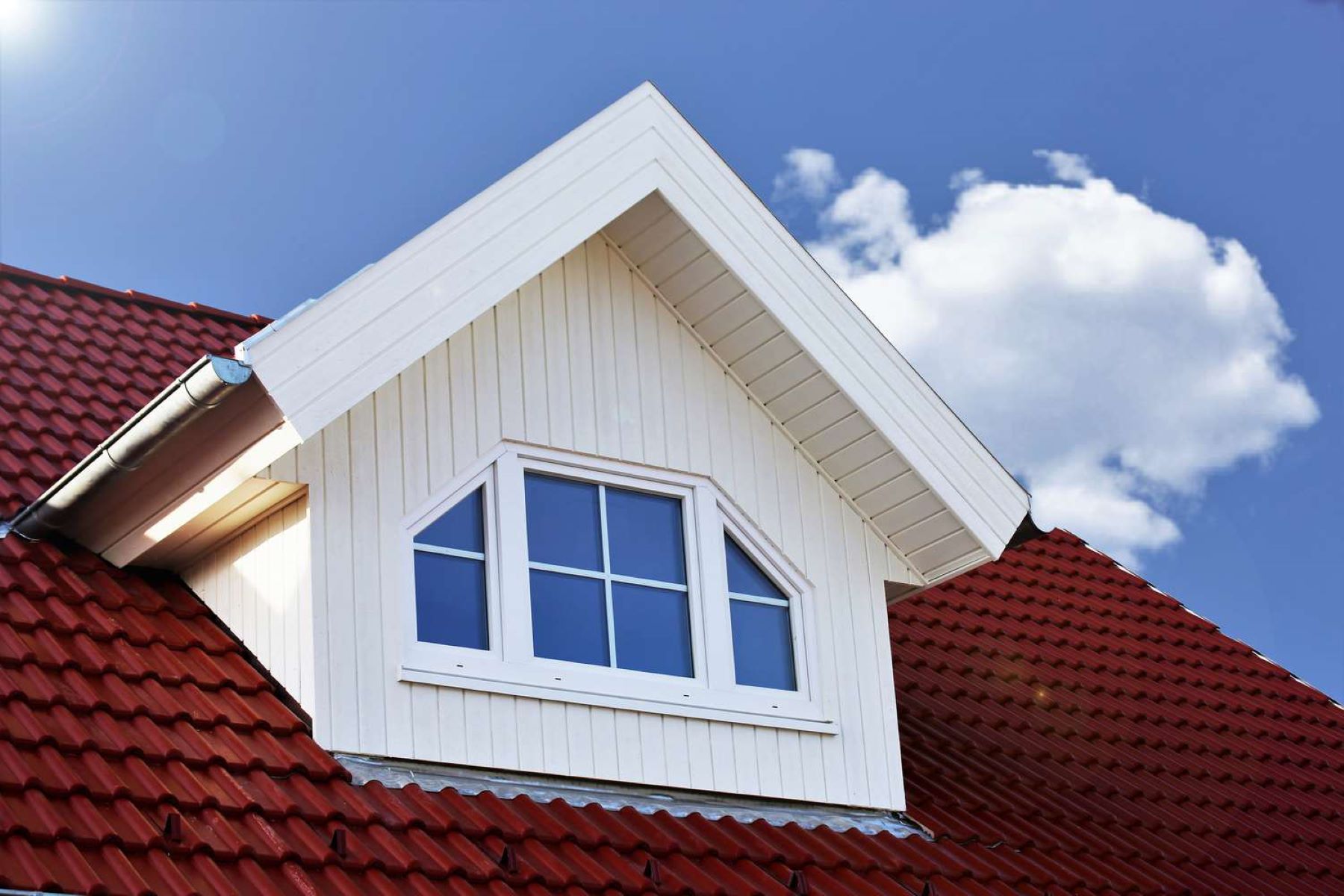
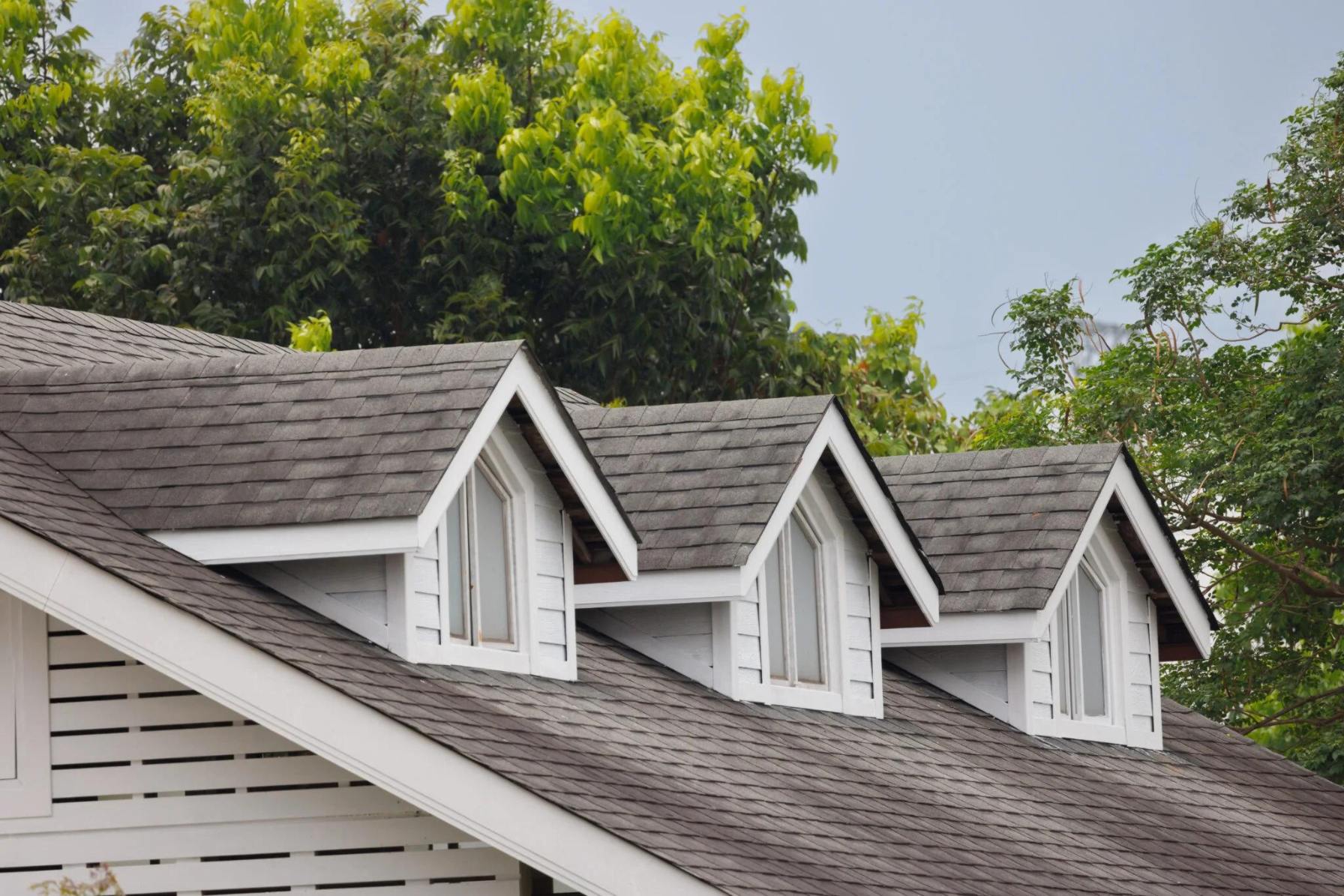
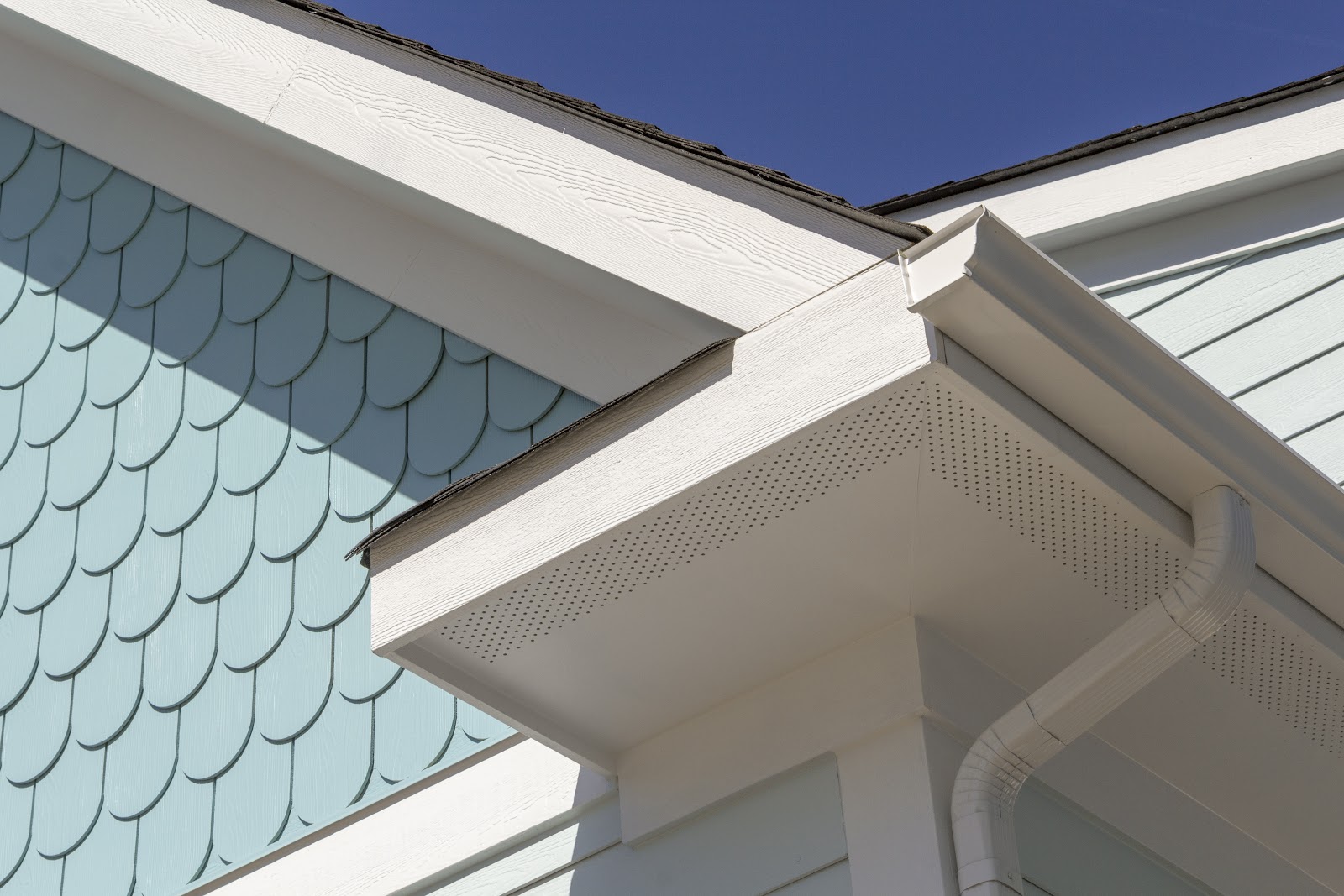

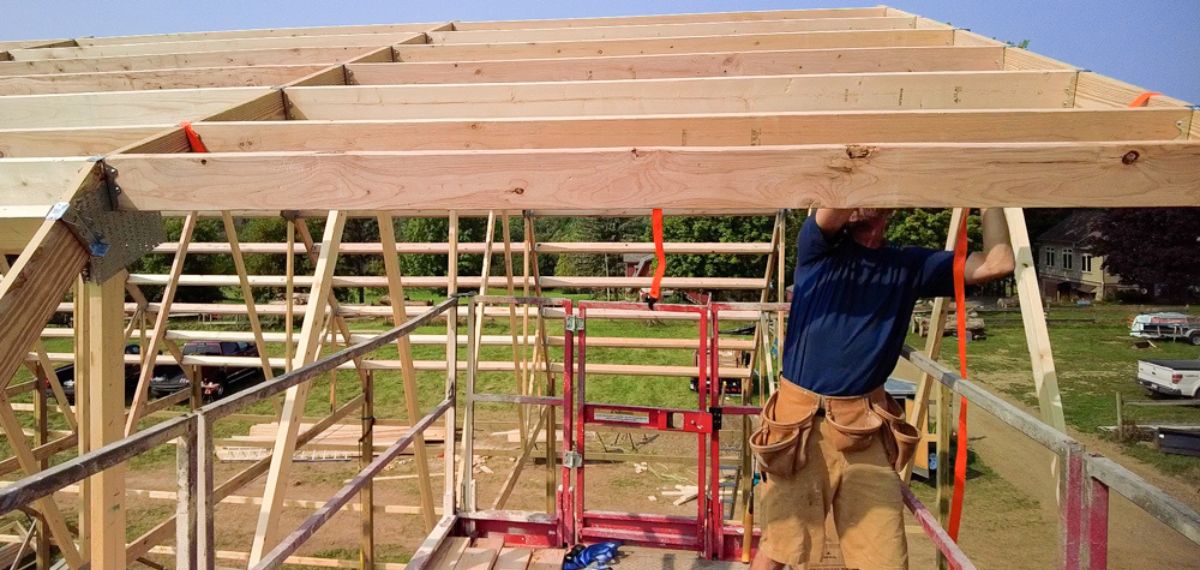
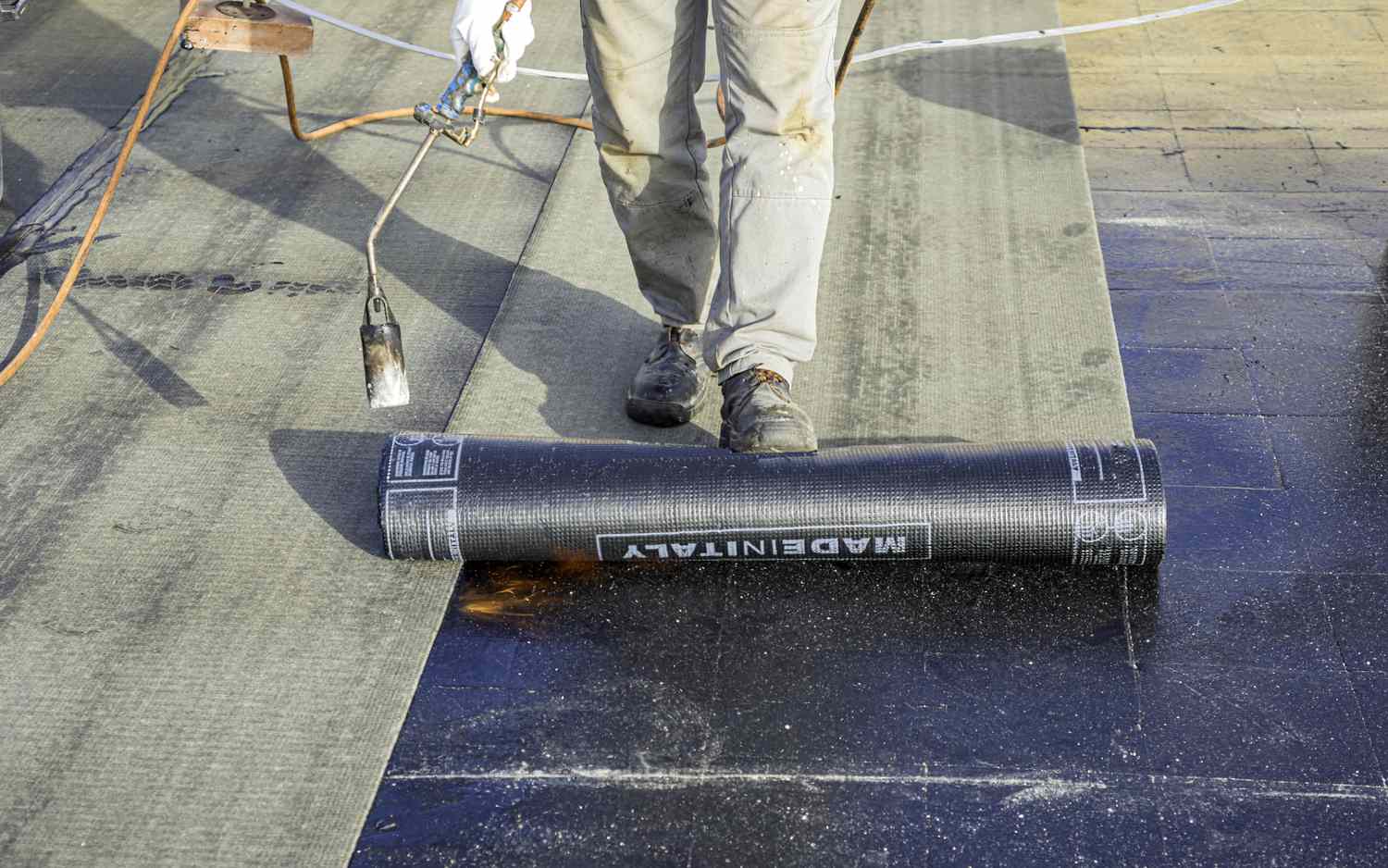
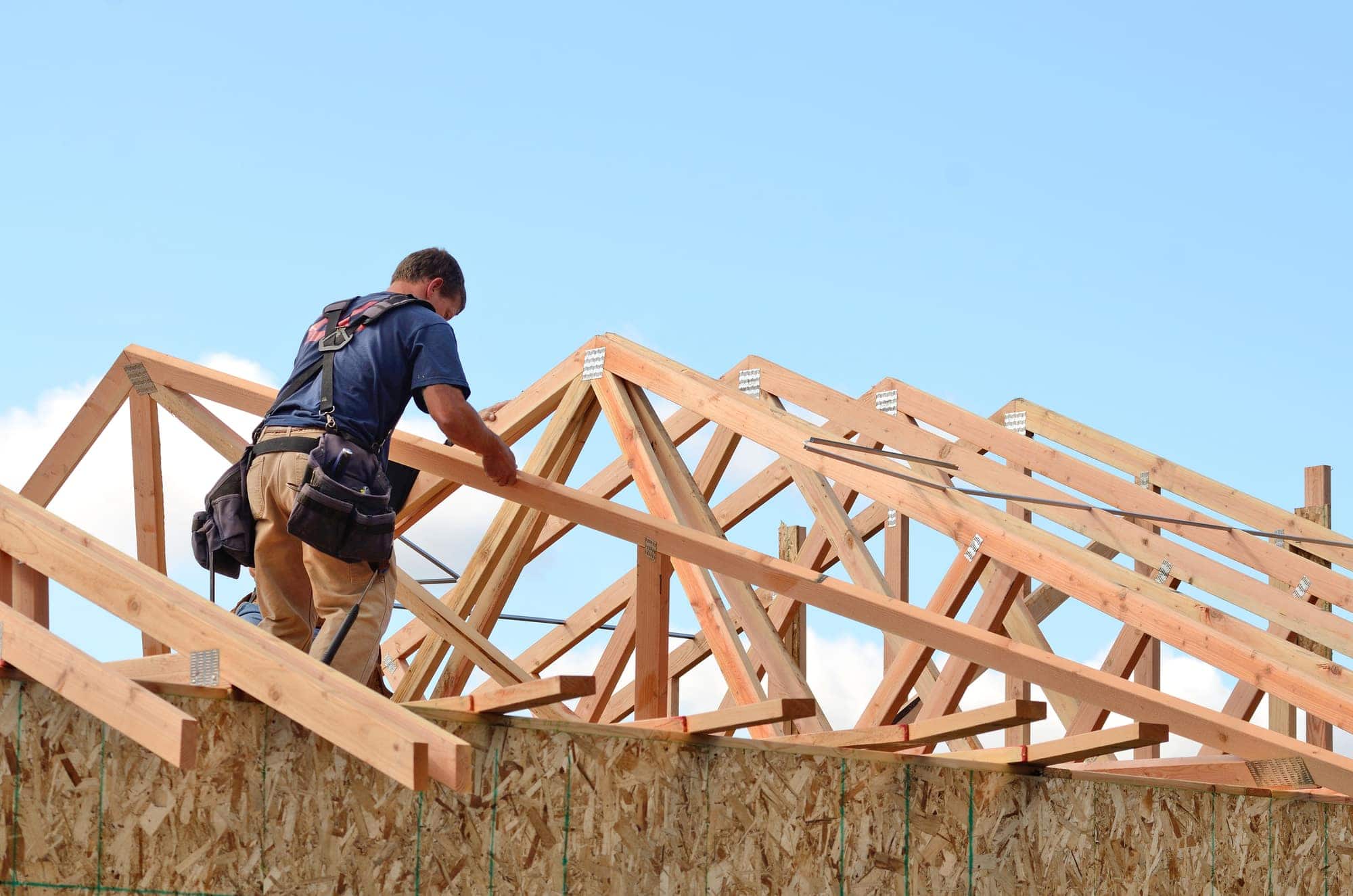

0 thoughts on “What Is A Bitumen Roof”